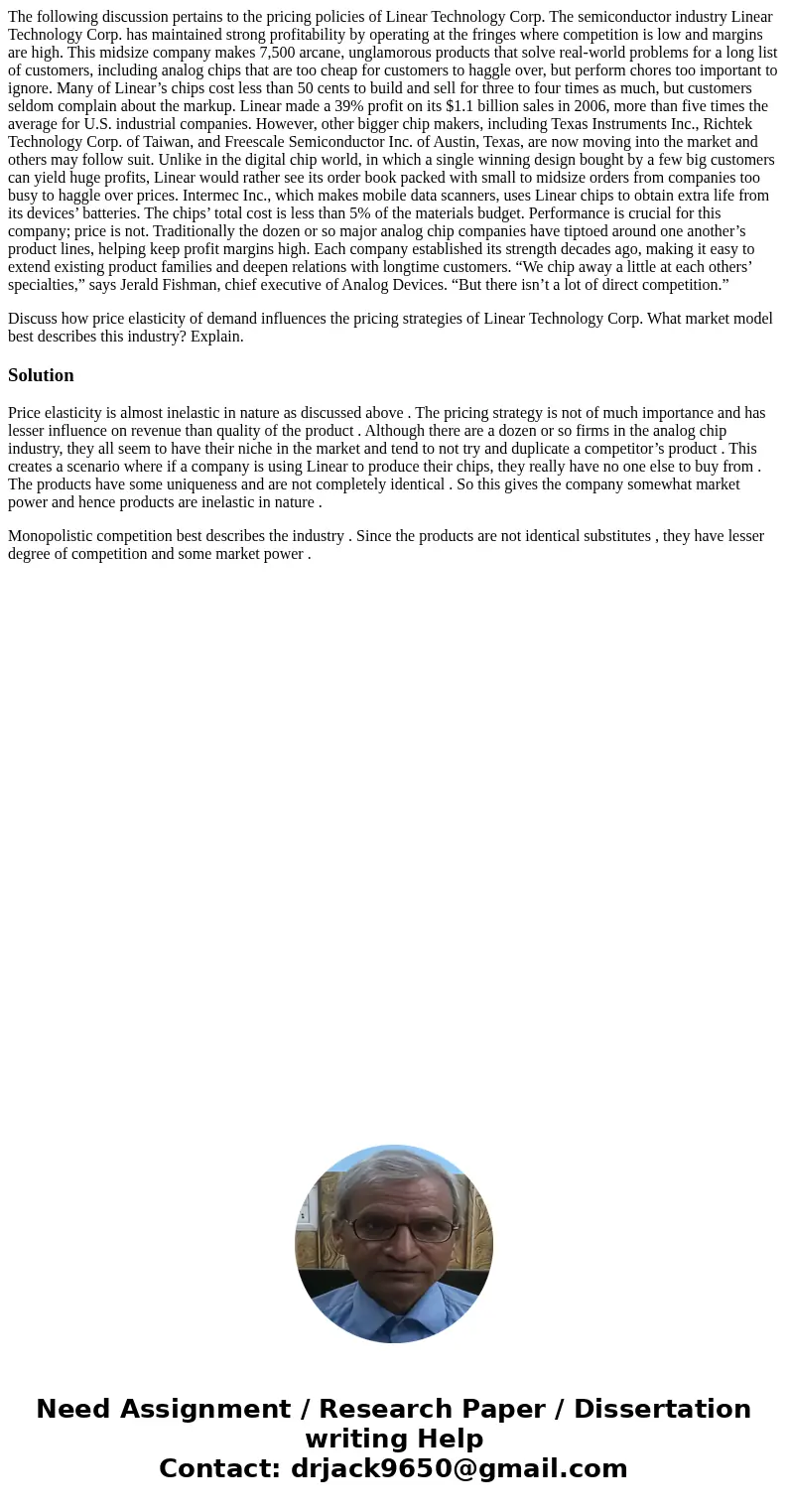The following discussion pertains to the pricing policies of
The following discussion pertains to the pricing policies of Linear Technology Corp. The semiconductor industry Linear Technology Corp. has maintained strong profitability by operating at the fringes where competition is low and margins are high. This midsize company makes 7,500 arcane, unglamorous products that solve real-world problems for a long list of customers, including analog chips that are too cheap for customers to haggle over, but perform chores too important to ignore. Many of Linear’s chips cost less than 50 cents to build and sell for three to four times as much, but customers seldom complain about the markup. Linear made a 39% profit on its $1.1 billion sales in 2006, more than five times the average for U.S. industrial companies. However, other bigger chip makers, including Texas Instruments Inc., Richtek Technology Corp. of Taiwan, and Freescale Semiconductor Inc. of Austin, Texas, are now moving into the market and others may follow suit. Unlike in the digital chip world, in which a single winning design bought by a few big customers can yield huge profits, Linear would rather see its order book packed with small to midsize orders from companies too busy to haggle over prices. Intermec Inc., which makes mobile data scanners, uses Linear chips to obtain extra life from its devices’ batteries. The chips’ total cost is less than 5% of the materials budget. Performance is crucial for this company; price is not. Traditionally the dozen or so major analog chip companies have tiptoed around one another’s product lines, helping keep profit margins high. Each company established its strength decades ago, making it easy to extend existing product families and deepen relations with longtime customers. “We chip away a little at each others’ specialties,” says Jerald Fishman, chief executive of Analog Devices. “But there isn’t a lot of direct competition.”
Discuss how price elasticity of demand influences the pricing strategies of Linear Technology Corp. What market model best describes this industry? Explain.
Solution
Price elasticity is almost inelastic in nature as discussed above . The pricing strategy is not of much importance and has lesser influence on revenue than quality of the product . Although there are a dozen or so firms in the analog chip industry, they all seem to have their niche in the market and tend to not try and duplicate a competitor’s product . This creates a scenario where if a company is using Linear to produce their chips, they really have no one else to buy from . The products have some uniqueness and are not completely identical . So this gives the company somewhat market power and hence products are inelastic in nature .
Monopolistic competition best describes the industry . Since the products are not identical substitutes , they have lesser degree of competition and some market power .

 Homework Sourse
Homework Sourse